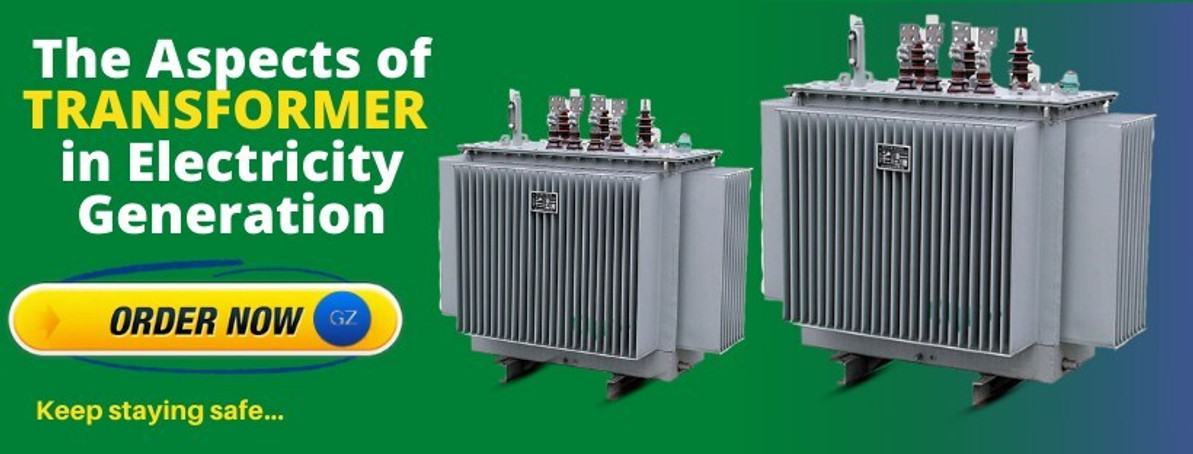The Aspects of Transformer in Electricity Generation
The Aspects of Transformer in Electricity Generation
The transformer is one important mechanism which is used in the field of electricity generation in all over the world, and is a motionless device which transfers electrical energy from one track to another circuit without change in the frequency.
What are Electrical Transformers?
Electrical transformers are machines that transfer electricity from one circuit to another with changing voltage level but no frequency change. Today, they are designed to use AC supply, which means that fluctuation in supply voltage is impacted by the fluctuation in the current. So, an increase in current will bring about an increase in the voltage and vice versa.
Transformers help improve safety and efficiency of power systems by raising and lowering voltage levels as and when needed. They are used in a wide range of residential and industrial applications, most importantly, in the distribution and regulation of power across long distances.

How Do Transformers Work?
A transformer’s physical basis lies in the mutual induction between two circuits that are linked by a common magnetic flux. It is usually equipped with 2 winding: primary and secondary. These winding share a magnetic core that is laminated, and the mutual induction that takes place between these circuits helps transfer electricity from one point to another.
Depending on the amount of linked flux between the primary and secondary winding, there will be different rates of change in flux linkage. To ensure maximum flux linkage, i.e. maximum flux passing through and linking to the secondary winding from the primary, a low reluctance path is placed common to both winding. This leads to greater efficiency in working performance, and forms the core of the transformer.
The application of alternating voltage to the winding in the primary side creates an alternating flux in the core. This links both winding to induce EMF(Electromagnetic Force) in the primary as well as the secondary side. EMF in the secondary winding causes a current, known as load current, if there is a load connected to the secondary section.
Types of Transformers
Electrical transformers can be classified into different categories depending upon their end-use, construction, supply, and purpose.
On the Basis of Design
- Core Type Transformer This transformer features two horizontal sections with two vertical limbs and a rectangular core with a magnetic circuit. Cylindrical coils (HV and LV) are placed on the central limb of the core type transformer.
- Shell Type Transformer The shell type transformer has a double magnetic circuit and a central limb with two outer limbs.
On the Basis of Supply
- Single Phase Transformer: A single-phase transformer has only one set of winding. Separate single-phase units can offer the same results as three-phase transfers when they are externally interconnected.
- Three Phase Transformer: A triple-phase (or three-phase) transformer has three sets of primary and secondary winding to form a bank of three single phase transformers. The three phase transformer is mainly used for generation, transmission and distribution of power in industries.

On the Basis of Purpose
- Step
Up Transformer
This type is determined by the number of turns of wire. So, if the secondary set has a greater number of turns than the primary side, it means that the voltage will correspond to that, which forms the base of a step up transformer. - Step
Down Transformer
This type is typically used for stepping down the level of voltage in the power transmission and distribution network and so its mechanism is the exact opposite of a step up transformer.
On the Basis of Use
- Power
transformer
Typically used to transmit electricity and has a high rating. - Distribution transformer: This electrical transformer has a comparatively lower rating and is used to distribute electricity.
- Instrument transformer: This electrical transformer is further sub-categorized into current and potential transformers.
- Current transformer
- Potential transformer
These transformers are used to relay and protect instruments simultaneously.
On the Basis of Cooling
- Self-Cooled Oil-Filled Transformer: This type is generally employed in small transformer of up to 3 MVA and it is designed to cool itself by the surrounding air flow.

- Water-Cooled Oil-Filled Transformer: This type of electrical transformer employs a heat exchange to facilitate the transfer of the heat from the oil to the cooling water.
- Air-Cooled (Air Blast) Transformer: In this type of transformer, the heat that is generated is cooled with the help of blowers and fans that force the circulation of air on the winding and the core.
For more Information about Electrical Transformer and Transformer Oil, please Contact Us
Recent Posts
-
The Ultimate Guide to Understanding the Difference Between Ethylene Glycol and Propylene Glycol
Introduction Glycols are versatile compounds widely used across various industries, from automotive …Apr 16, 2025 -
What are Agricultural Machinery
Introduction Agricultural Machinery is also used to improve the wide range of production prac …Apr 14, 2025 -
The Best Electrical Wire in Nigeria 2025 (Updated)
Introduction Electrical wires are the basic unit of every electrical system. Electrical wires …Apr 14, 2025




